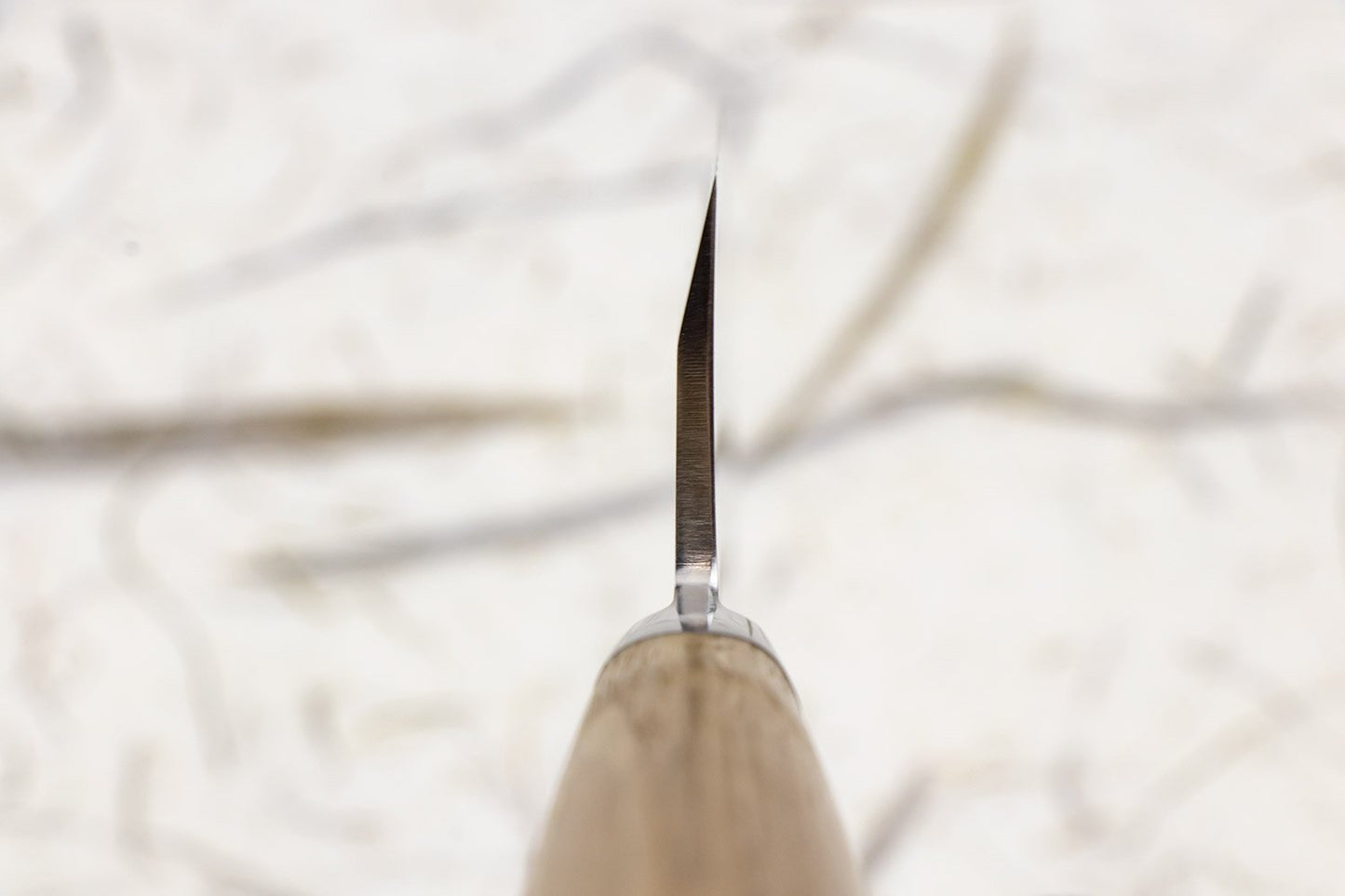Tadafusa Hocho Kobo HK-5 Deba 150mm
Tadafusa Hocho Kobo HK-5 Deba 150mm
Couldn't load pickup availability
About the Shape -Deba means “short fat tooth” and this describes the shape of the knife. This is the first knife a sushi chef would use when preparing fish. It is used to fillet fish and butcher the boneless meat. The Deba is a traditional Japanese blade that is only sharpened on one side. This is called “single bevel.” Don’t let the shape and weight of a Deba fool you; they are nimble and precise. Choose the length of your Deba based on the size of fish you’ll be butchering most often.
About Tadafusa Hocho Kobo -Tadafusa knives are manufactured in the city of Sanjo, part of the Niigata prefecture. Not only known as a traditional centre for tool and knife forging, but also for the finest sake Japan has to offer. Great booze AND knives? Let’s go! The core of the blade is made from a hard SLD steel but is clad in softer stainless steel. The softer, stainless steel acts like a cushion and protects the harder steel.
These Tadafusa knives were developed by Fumie Shibata, a female industrial designer who sought out input from the female perspective. They feature a tapered tang for a great balance, the handle is made from semi-charcoaled chestnut wood which helps make it very sanitary and corrosion resistant, and no, they aren’t just for ladies.
| Shape | |
|---|---|
| Blade Length | | |
| Blade Height | |
| Blade Thickness Above Heel | |
| Weight | |
| Steel Type |
Rust Prone ⓘ
This knife can rust, click to learn more.
|
| Rockwell Hardness | 60 - 62 |
| Edge/Bevel | |
| Handle | Western Handle - Chestnut Metal Bolster |
| Knifeline | Tadafusa Hocho Kobo |
| Made in |
Knife Care
Knife Care
Shipping and Returns
Shipping and Returns
We aim to ship your order within 1 business day at Knifewear, if there is a hold up, we'll aim to let you know and give you a timeline.
We offer $3 shipping on orders over $100* anywhere in Canada and $200* to customers in the USA. We ship worldwide, and offer up to the minute rates from our shipping partner DHL.
*Konro Grills and some other larger items are excluded from the free shipping offer.
How do I make a return on an online order?
No worries, we've got you sorted. Head over to https://knifewear.com/returns and follow the prompts.
Can I pick up my order Curbside / At the store?
Absolutely, as long as all the items you are looking for are in stock at the location you want to pickup from, you'll be able to select that at the checkout. If one or more items aren't at your preferred location we are happy to ship it to you.
Request Additional Info
Request Additional Info






